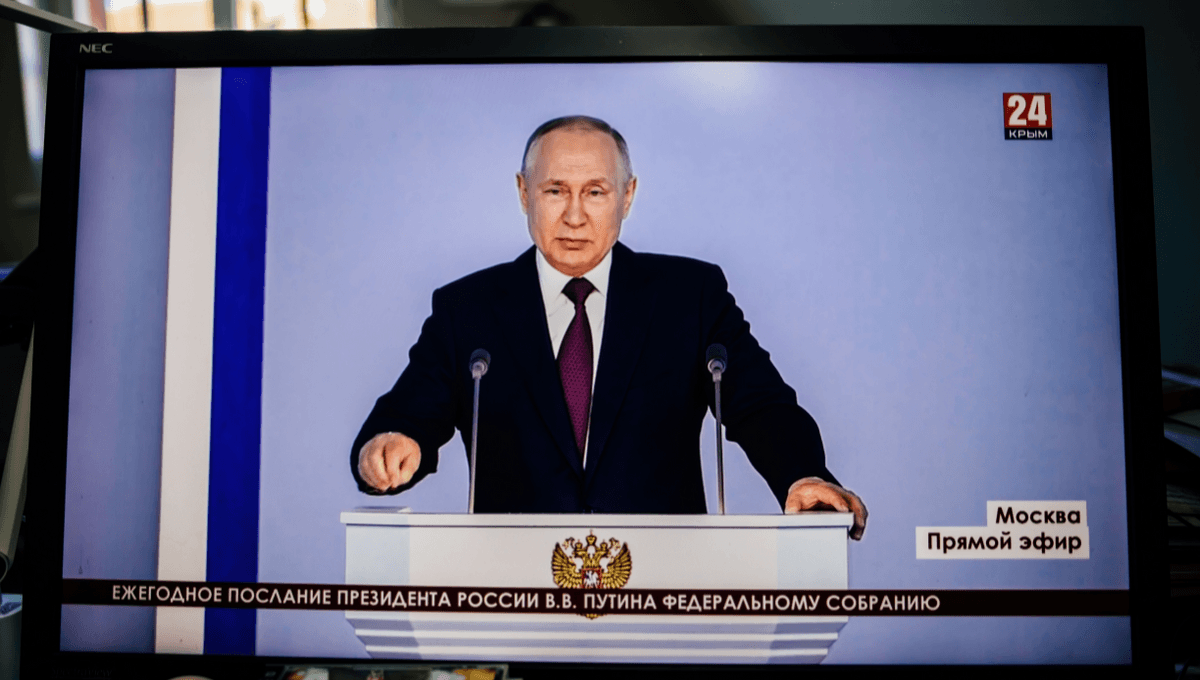
New research on deepfake videos about the Russian invasion of Ukraine has shown they are distorting people’s perception of reality, creating a dangerous atmosphere where many users do not trust any media they see. Fueled by this deep distrust, conspiracy theories and paranoia are being allowed to flourish.
Manipulated images in political propaganda are nothing new. One of history’s most famous examples is a 1937 photograph of Joseph Stalin walking along the Moscow Canal with Nikolai Yezhov, the once-powerful head of the Soviet secret police who organized the “Great Purge.” By 1940, Yezhov fell victim to the grim system of his own making and was executed. The original photograph was doctored to remove him from the image and replace his figure with background scenery.
New technology has revitalized these old tricks. In an age of social media and artificial intelligence (AI), forged imagery has become all the more realistic – and all the more dangerous.
In a new study, researchers at University College Cork in Ireland took a close look at how people on the social media platform X (formerly Twitter) responded to deepfake content during the ongoing Russian-Ukrainian war. The main takeaway is that many people have lost their faith in the veracity of wartime media because of deepfakes, almost to the point where nothing can be trusted anymore.
“Researchers and commentators have long feared that deepfakes have the potential to undermine truth, spread misinformation, and undermine trust in the accuracy of news media. Deepfake videos could undermine what we know to be true when fake videos are believed to be authentic and vice versa,” Dr Conor Linehan, study author from University College Cork’s School of Applied Psychology, said in a statement.
Deepfakes are audiovisual media, often of people, which have been manipulated using AI to create a false impression. A common technique involves “pasting” the image of someone’s face (let’s say a famous politician) onto the video of someone else’s body. This allows the producer to create the impression that the politician is saying or doing whatever they please, like a hyper-realistic virtual puppet.
The researchers found synthetic fake videos about the current conflict in Ukraine were coming from all angles. In early March 2022, a deepfake of Russian President Vladimir Putin emerged, showing him announcing peace with Ukraine. Similar fake videos of Ukrainian President Volodymyr Zelenskyy telling his soldiers to put down their arms were also widely shared.
In another example of disinformation, the Ukraine Ministry of Defence tweeted footage that they claimed showed a legendary fighter jet pilot called “The Ghost of Kyiv” just a couple of days after the invasion kicked off in February 2022. In fact, it was just video footage taken from the video game Digital Combat Simulator.
A major issue identified by the researchers was that most of the examples in their dataset involved media outlets mislabeling legitimate media as deepfakes.
And herein lies the problem: Deepfakes have undermined users’ trust in the authenticity of footage so significantly that they have lost trust in any footage coming from the conflict. No one can tell what is real and what is fake anymore, even once-trusted news sources.
The researchers found this deep skepticism about the veracity of media was being infused with anti-media sentiment, which they say was “used to justify conspiratorial thinking and a distrust in reliable sources of news.”
For example, a significant number of users on X made comments such as: “None of the videos coming out of this war can be trusted. In the next few years, the media will be using sophisticated deepfake software. If you think we have a problem now, wait until we start seeing completely faked videos, as opposed to their current lies”.
Another comment reads: “This is a western media deepfake. These journalists are under the globalists’ thumb.”
The researchers conclude that we need better “deepfake literacy” to understand what constitutes a deepfake, plus improved skills to spot when media may have been tampered with. However, the study also suggested that efforts to raise awareness around deepfakes may sow distrust around legitimate videos. As such, news organizations and governments need to be extremely wary in how they tackle the issue of manipulated media because they risk undermining trust altogether.
“News coverage of deepfakes needs to focus on educating people on what deepfakes are, what their potential is, and both what their current capabilities are and how they will evolve in the coming years,” added John Twomey, lead study author from the School of Applied Psychology at University College Cork.
The study is published in the journal PLOS ONE.
Source Link: Deepfakes About War In Ukraine Are Sowing Distrust And Screwing With Reality